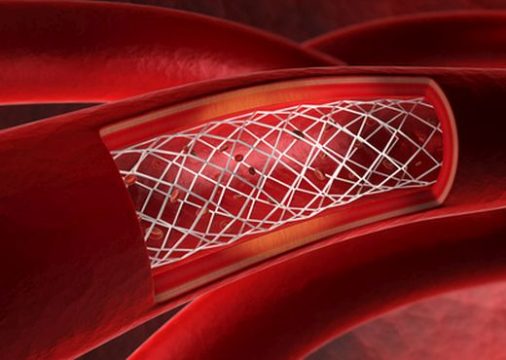At present, PCI is the preferred treatment for femoropopliteal lesions and drug coated balloons (DCB) have shown good performance. However, they have not yet been shown superior to bare-metal stents (BMS).

This study compared randomized trials IN.PACT SFA I/II and IN.PACT JAPAN including 288 patients vs. the prospective Complete SE and DURABILITY II with 483 analyzed patients.
Final efficacy end point was primary patency defined as clinically driven target lesion revascularization (TLR) or freedom from restenosis at 12 months.
The populations were similar, mean age was 68, 65% were men, 90% presented hypertension, 40% diabetes, 6% required insulin, 34% were smokers and 50% had heart disease.
96% were in Rutherford 2-3 functional class. In 96% of cases, the superficial femoral was treated, 2.5% the popliteal, and 1.5% both. Lesion length was 80 mm, 33% were total occlusions and residual restenosis was higher in DCB patients (20% vs. 17.1% p<0.01).
Read also: TAVR and New Onset LBBB.
Primary end point of efficacy resulted in favor of DCB (90.4% DCB vs. 80.9% BMS, P= 0.007). At 36 months, freedom for ischemia driven TLR also resulted in favor of DCB (85.6% DCB, 73.7% BMS, P= 0.001), as was MAE (25.3% DCB, 38.8% BMS, P < 0.001).
There were no differences at 3 years in all-cause mortality, major amputation or stent thrombosis.
Conclusion
In this group of patients (based on the adjusted analysis of patients pooled from different studies) drug coated balloons showed better patency, lower need for revascularization and lower MAE rates, with no statistical difference in mortality, amputation or stent thrombosis, compared against conventional bare metal stents. This analysis supports the use of drug coated balloons in moderately complex lesions in femoropopliteal territory, where both strategies are viable.

Dr. Carlos Fava.
Member of the editorial board of SOLACI.org.
Original Title: Comparison of Drug-Coated Balloons vs Bare-Metal Stents in Patients With Femoropopliteal Arterial Disease.
Reference: Mehdi H. Shishehbor, et al. J Am Coll Cardiol 2023;81:237–249.
Subscribe to our weekly newsletter
Get the latest scientific articles on interventional cardiology





